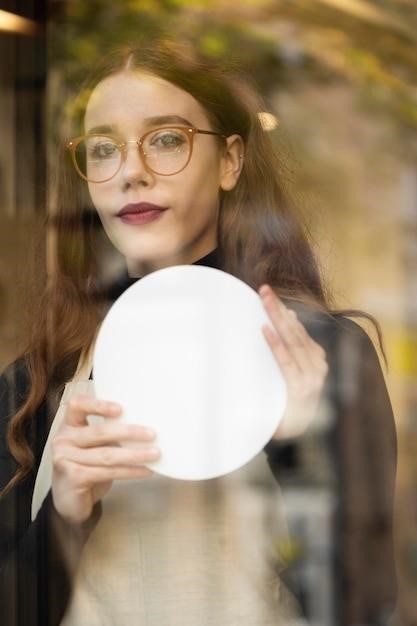The Looking-Glass Self Theory
The looking-glass self theory, introduced by Charles Cooley, suggests that our sense of self and social identity is heavily influenced by how others perceive us. This theory emphasizes the role of social interaction in shaping our self-concept, arguing that we develop our understanding of ourselves through the reflected appraisals of others.
Introduction
The looking-glass self theory, a cornerstone of social psychology, offers a profound insight into the intricate relationship between self-perception and social interaction. This theory, first articulated by sociologist Charles Horton Cooley in the early 20th century, posits that our sense of self is not an innate, fixed entity but rather a dynamic construct shaped by how we believe others perceive us. In essence, the looking-glass self theory proposes that we see ourselves reflected in the eyes of others, interpreting their reactions and judgments to form a self-image.
This theory has profound implications for understanding how individuals navigate social situations, develop their self-concept, and build their identity. It underscores the significant impact of social interactions on our self-perception and highlights the interconnectedness of our individual identities within the larger social fabric. The looking-glass self theory remains a relevant and insightful framework for understanding the complexities of self-identity in a world increasingly shaped by social media and digital interactions.
Cooley’s Looking-Glass Self Theory
Charles Horton Cooley, a prominent American sociologist, introduced the concept of the looking-glass self in his 1902 work “Human Nature and the Social Order.” Cooley’s theory was a departure from the prevailing view of the self as an autonomous, independent entity. Instead, he proposed that the self is fundamentally social, shaped by our interactions with others and our interpretations of their perceptions of us.
Cooley argued that our self-concept is a product of a three-step process⁚ (1) imagining how we appear to others, (2) imagining their judgment of us, and (3) developing feelings about ourselves based on these imagined judgments. This process, he suggested, is ongoing and dynamic, constantly adapting as we encounter new individuals and situations. Cooley’s looking-glass self theory provided a compelling framework for understanding the social construction of self and the influence of social interactions on our sense of identity.
The Three Stages of the Looking-Glass Self
Cooley’s looking-glass self theory is characterized by three distinct stages that illustrate how we develop our self-concept through social interactions. These stages are⁚
- Imagination⁚ This stage involves imagining how we appear to others. We consider how we think others see us, including our physical appearance, personality traits, and behaviors. This imagined perception is influenced by our past experiences, social cues, and cultural norms.
- Judgment⁚ In this stage, we imagine the judgments others make about us based on their perception of our appearance and behavior. We consider whether they see us as intelligent, attractive, competent, or worthy of respect. These imagined judgments can be positive, negative, or neutral, and they shape our feelings about ourselves.
- Self-Feeling⁚ This final stage involves developing feelings about ourselves based on our imagined perceptions and judgments. If we imagine others seeing us favorably, we might feel proud, confident, or happy. Conversely, if we imagine negative judgments, we might feel ashamed, insecure, or anxious. These self-feelings contribute to our overall self-concept and influence our future interactions.
These three stages demonstrate the dynamic and interactive nature of the looking-glass self, highlighting how our sense of self is constantly evolving based on our interactions with others and our interpretations of their perceptions.
The Importance of Social Interactions
The looking-glass self theory emphasizes the profound impact of social interactions on our sense of self. It recognizes that we are not born with a pre-defined self-concept but rather develop it through our experiences with others. Social interactions provide the raw material for our self-understanding by exposing us to various perspectives, feedback, and social cues.
Through interactions, we receive information about how others perceive us, which shapes our imagined perceptions and judgments. These perceptions, whether positive or negative, influence our self-feelings and contribute to our evolving self-concept. The quality and nature of our social interactions, therefore, play a crucial role in shaping our sense of identity, self-esteem, and overall well-being.
The theory highlights the importance of social environments in promoting self-development and personal growth. It underscores the significance of meaningful relationships, supportive communities, and diverse social experiences in fostering a positive and healthy sense of self.
Impact on Self-Concept and Identity
The looking-glass self theory has profound implications for our self-concept and identity. It suggests that our self-understanding is not solely based on internal thoughts and feelings but is significantly shaped by external perceptions. We internalize the judgments and reactions of others, incorporating them into our self-image and influencing how we view ourselves.
The theory highlights the importance of social feedback in shaping our sense of self-worth, competence, and belonging. Positive feedback from others can boost our self-esteem and reinforce our positive self-perceptions. Conversely, negative feedback can erode our confidence and lead to feelings of inadequacy or shame. This dynamic interplay between social perceptions and our self-concept can significantly impact our emotional well-being, motivations, and behaviors.
The looking-glass self theory emphasizes the interconnectedness between self and society, suggesting that our identity is not a fixed entity but rather a fluid and evolving construct shaped by our social interactions and the perceptions of others.
The Looking-Glass Self in Social Psychology
The looking-glass self theory has become a cornerstone in social psychology, providing a framework for understanding the complex interplay between social interaction and individual identity. It has influenced numerous research areas, including self-esteem, social comparison, and social identity theory.
Social psychologists have explored how the looking-glass self operates in various social contexts, such as group dynamics, interpersonal relationships, and online communities. Studies have shown that individuals’ perceptions of themselves are often influenced by the social groups they identify with and the social norms that prevail within those groups.
The theory has also been used to explain phenomena like the “spotlight effect,” where individuals overestimate the extent to which others are paying attention to them, and the “illusory transparency” effect, where individuals believe their internal thoughts and feelings are more apparent to others than they actually are.

Applications of the Looking-Glass Self Theory
The looking-glass self theory has found practical applications in various fields, including education, therapy, and marketing. In education, teachers can use the theory to understand how students perceive themselves and their learning abilities, fostering a supportive and encouraging classroom environment.
In therapy, the theory helps therapists understand how clients’ self-esteem and self-concept are shaped by their relationships with others. Therapists can then use this understanding to help clients develop more realistic and positive self-perceptions.
Marketers have also applied the looking-glass self theory to their strategies, understanding that consumers often purchase products that they believe will enhance their image and make them appear more desirable to others. This theory has influenced the development of advertising campaigns that emphasize social approval and status.
Criticisms of the Looking-Glass Self Theory
While the looking-glass self theory has been influential, it has also faced criticism for its simplicity and lack of nuance. One major criticism is that it overemphasizes the influence of others’ opinions on our self-concept, neglecting the role of our own individual experiences, beliefs, and values. Critics argue that we are not merely passive recipients of others’ judgments but actively engage in interpreting and processing information about ourselves.
Another criticism is that the theory does not adequately account for the complexities of social interaction. It suggests a straightforward process of reflection and internalization, overlooking the possibility of multiple perspectives, conflicting opinions, and the subjective nature of perception. The theory also fails to explain how individuals manage to maintain a consistent sense of self despite encountering diverse opinions and feedback from others.
Furthermore, the theory has been criticized for its lack of empirical support. Critics argue that the theory’s assumptions about the direct and automatic influence of others’ perceptions on self-concept have not been consistently demonstrated through research. Despite these criticisms, the looking-glass self theory continues to be a valuable framework for understanding the social influences on our self-perception and identity.
Contemporary Perspectives on the Looking-Glass Self
Contemporary perspectives on the looking-glass self acknowledge the theory’s limitations while recognizing its enduring relevance. Modern research in social psychology has explored the nuanced ways in which social interaction shapes our self-concept, moving beyond the simplistic reflection model. These perspectives emphasize the active role individuals play in interpreting and processing social feedback, incorporating it into their self-understanding.
One contemporary perspective highlights the importance of social comparison in shaping our self-evaluations. We compare ourselves to others, particularly those we perceive as similar or relevant, to gauge our abilities, beliefs, and values. This process can both enhance and undermine our self-esteem, depending on the nature of the comparisons we make. Another perspective emphasizes the role of social identity in shaping our self-concept. We derive a sense of belonging and self-worth from our membership in various social groups, and these identities influence how we perceive ourselves and interact with others.
These contemporary perspectives offer a more comprehensive understanding of how social interaction shapes our self-concept, recognizing the complexity of the process and the active role individuals play in constructing their self-understanding. While the looking-glass self theory may not fully capture the intricacies of this process, it continues to provide a valuable starting point for understanding the social influences on our sense of self.
The Looking-Glass Self in Modern Society
In today’s digital age, the looking-glass self theory takes on new dimensions. Social media platforms, with their constant stream of curated images and opinions, provide a virtual looking glass where individuals present carefully constructed versions of themselves. This online environment can amplify the impact of social feedback, creating both opportunities for validation and potential for self-doubt.
The rise of social media has led to a phenomenon known as “social comparison,” where individuals compare themselves to others based on online representations. This can create a distorted perception of reality, as people tend to present idealized versions of themselves, leading to feelings of inadequacy or envy. At the same time, social media can foster a sense of belonging and community, providing platforms for individuals to connect with like-minded people and share their experiences. This can contribute to a positive self-image, as individuals receive affirmation and support from their online communities.
The looking-glass self theory remains relevant in modern society, highlighting the enduring influence of social feedback on our sense of self. However, the complexities of the digital age require us to critically evaluate the impact of online interactions on our self-concept and to strive for a balanced perspective that acknowledges both the potential for validation and the risks of social comparison.
The looking-glass self theory remains a fundamental concept in understanding the development of self-identity. Cooley’s insights into the crucial role of social interaction in shaping our perceptions of ourselves continue to resonate in contemporary society. While the theory has been subject to criticism for its potential to overemphasize the influence of others and for neglecting the role of individual agency, it remains a valuable framework for exploring the complex interplay between self and society.
In a world increasingly defined by social media and virtual interactions, the looking-glass self theory serves as a reminder of the power of social feedback and the importance of critical reflection. By recognizing the impact of others’ perceptions on our self-concept, we can strive for a more balanced understanding of ourselves, acknowledging both our strengths and our limitations. Moreover, the theory encourages us to engage in meaningful social connections, recognizing that our relationships with others play a vital role in shaping who we are.
The looking-glass self, while not a definitive explanation of self-identity, provides a valuable lens through which to understand the dynamic interplay between the individual and the social world. By recognizing the influence of others on our sense of self, we can navigate the complexities of social interaction with greater awareness and cultivate a more authentic and fulfilling sense of identity.
References
Cooley, C. H. (1902). Human nature and the social order. New York⁚ Scribner’s.
Siljanovska, M., & Stojcevska, B. (2018). The looking-glass self and social media. Journal of Media and Communication Studies, 10(1), 1-10.
Arnett, J. J. (2002). Longing for a big picture look at dialogical self theory?⁚ Look no further! Besides providing detailed examinations of the theory itself, … (Vol. 1, pp. 1-2). Clark University.
Rousseau, N. (2002). Self, symbols, and society. Rowman & Littlefield.
Crawford Fletcher, A. M. (2024). The Looking Glass Self Exercise⁚ An excellent exercise for enhancing group dynamics at the beginning of a training for participants who are different from one … (Vol. 5, pp. 1-5).
Nickerson, C. (2024). The looking glass self is a sociological concept that ones self grows out of societys interpersonal interactions and the perceptions of others. The concept of the looking glass self demonstrates that self-relation, or how one views oneself is not a solitary phenomenon, but rather includes others. 1. Cooleys Theory⁚ Cooleys concept of self-development has been termed looking-glass concept. According to him,. (Vol. 38, pp. 1-38).

Cooley, C. H. (1902). A Critical Analysis of Interpersonal Communication in Modern Times of the Concept Looking Glass Self (1902).
